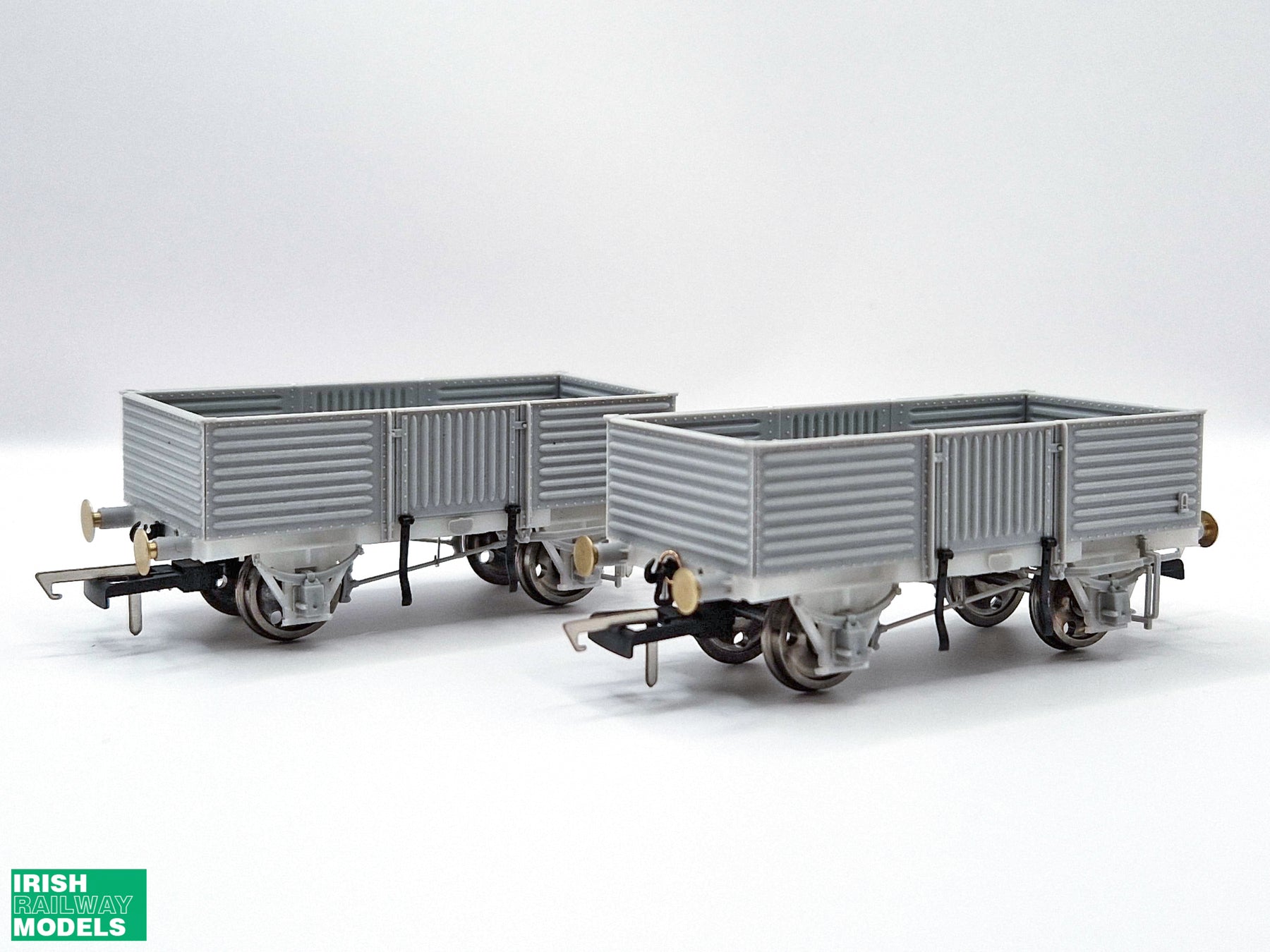
You Can't Beat A Bit of Bulleid - Open Wagons Next For IRM
After a period of locomotives, coaches and railcars, we are going back to our roots and will now bring you a whole new range of beautifully detailed, uniquely Irish wagons.
We have been famed with making use of common chassis for wagon ranges since our inception, and it is a number of years since our last mammoth wagon project, the hugely successful "Project 42".

So, where do we go this time? Well, we wanted a range of wagons that would be widely useful to modellers, widespread across the network and eras, and uniquely Irish. So, we decided there was only one place to go, the Bulleid triangulated chassis, starting with the CIE corrugated open wagons.
History

In 1950 the board of Corás Iompair Éireann (CIÉ) appointed Oliver Bulleid as its Chief Mechanical Engineer. Bulleid, renowned as designer of the distinctive Merchant Navy and Light Pacific locomotives during his tenure with the Southern Railway in England, did not have an opportunity to pursue his legendary innovativeness to the same extent in Ireland, but his arrival nonetheless heralded a period of modernisation and standardisation.
Apart from implementing the complete transition to diesel motive power, he also set about standardising CIÉ’s fleet of rolling stock with his patented triangulated underframe providing the basis.
Perhaps the most recognisable of the goods vehicles was the humble open wagon with its galvanised pressed metal body. More than 2,500 were constructed at Inchicore between 1956 and 1969, with up to twelve being outshopped each week at the height of production. They quickly replaced older wooden-built equivalents, many of which had entered service with CIÉ’s predecessor, the Great Southern Railways, or its constituent companies.

The welded construction of the underframe provided excellent strength despite being relatively light and the pressed metal panels used to create the bodywork were both durable and easily replaceable, resulting in a hard-wearing wagon which could cope with rough treatment in unfitted trains and less-than-careful handling during loading and unloading.
The wagons were a common sight across the entire CIÉ network, from major yards in Dublin and Cork to the most rural of branch lines, carrying a wide variety of loads ranging from peat briquettes to gypsum, pre-ISO shipping containers and farm machinery. However, their most famous duty was the conveyance of sugar beet during the annual autumn-winter harvest season, when trainloads of the crop would be transferred from loading points across the country to plants at Carlow, Mallow, Thurles and Tuam. Even as more modern continuously-braked goods stock was introduced in the 1970s, rakes of these open wagons were retained for beet season, persevering in traffic until replaced by vacuum-braked wagons in the 1980s.
Wagons were initially outshopped with ‘Flying Snail’ totems before giving way to the CIE ‘Broken Wheel’ logo during the 1960s. Typically for Irish Rail, the wagons were rarely, if ever, repainted, with many of the wagons ending their careers with the earlier Flying Snail logos in the 1980s!
The Model

With an abundance of recent locomotive releases, particularly in the CIE era of the 1950s-1980s timeframe in recent years, we felt it necessary to provide the most numerous and important wagons from this golden era to help the modeller to build accurate trains. The Bulleid triangulated underframe was a standard unit that gave birth to a whole host of wagons, which will be reflected in our range in the months and years to come.
We kicked off this adventure with the Bulleid open, oft our most requested wagon model for IRM and one that reached every corner of the network from the mid 1950s all the way to the 1980s when they made up the now legendary sugar beet trains.

An essential wagon for any Irish modeller with Silver, green, grey, black, black and tan and supertrain locos, these are a must and the first step in our CIE unfitted wagon range, which will feature other wagons yet to be announced.
We took a trip to Dunsandle over the summer of 2021 to survey their excellent open wagon undergoing restoration. A big thanks to Maurice Mitchell at Dunsandle for facilitating our visit and survey.

The open wagon may seem like a fairly simple wagon to produce, and for the most part it is. However, there is one tricky piece to the puzzle, and something that is essential to capture the essence of these characterful wagons; the interior. Due to their corrugated construction, the inside of the wagon required extra tooling to capture the distinctive ribbing inside. Our factory came to the rescue here, with intelligent toolmaking to ensure this was achieved.

We also wanted to get some weight into the wagon, but not compromise with a false floor to spoil the look of the wagon interior, so we have a fully diecast floor as part of the underframe structure. A wealth of separate plastic detail consisting of all the braking and underframe gear, door bangers, sprung buffers and brass bearing cups to allow the smoothest of running complete the make up of these beautifully detailed wagons as you come to expect from IRM.
Available in our typical triple packs, our first production run covers a variety of eras, from original flying snail, to CIE roundel and then both beet and permanent way packs. Priced at €89.95 per triple pack, and 10% off when you buy two packs or more, they are due to arrive in stock in Q3 of 2024. Click the link below to place your pre-order. Pre-ordering early is recommended to avoid disappointment as production slots will be limited.
Pre-Order Your Bulleid Open Wagons Here!
